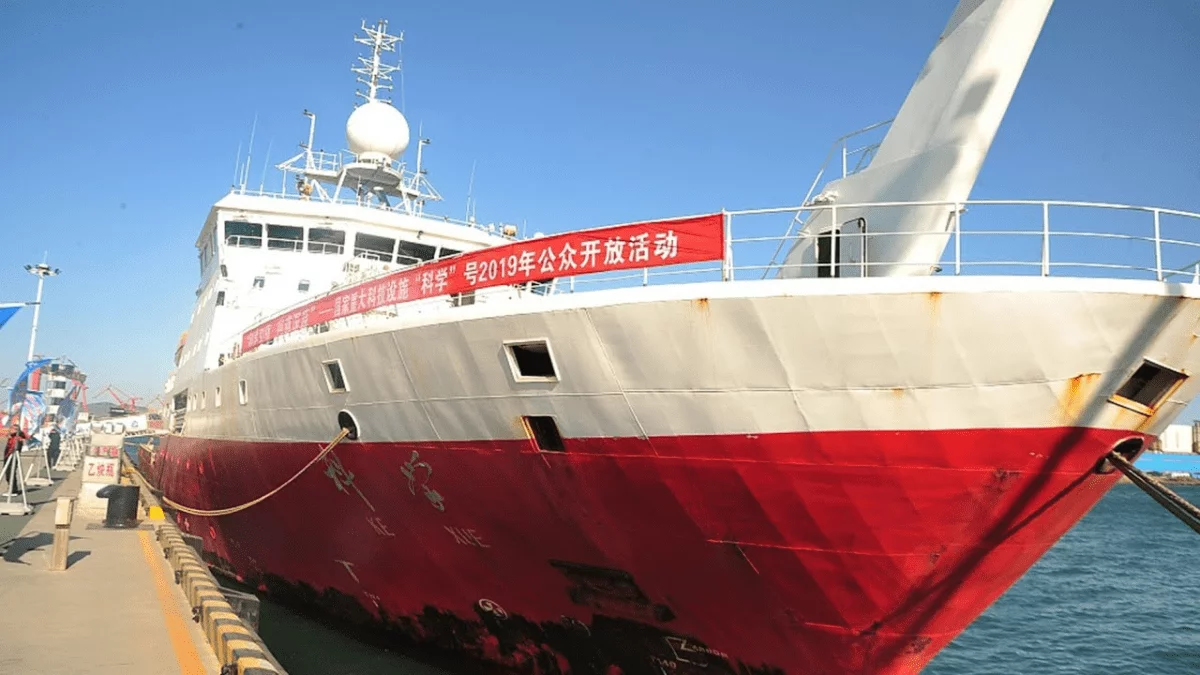Shi Yan 6, the Chinese research vessel was given permission to enter the Colombo port. The vessel is expected to research with Sri Lanka’s National Aquatic Resources Research and Development Agency (NARA). However, the concerns about spying are still prominent from China’s previous activities.
Previously, in August last year, a sort of similar visit by the Chinese Ship ‘Yuan Wang 5’, the ballistic missile and satellite tracking ship also entered Hambantota port, cause of instantly triggering a strong reaction from the Indian side. Amidst maritime security concerns for India in the Indian Ocean, Sri Lankan Ministry spokesperson Kapila Fonseka said the Chinese vessel Shi Yan 6 was allowed to enter the Colombo port solely for research activities for 48 hours, starting from Monday.
The grants for carrying on the research activities would only be conducted under the supervision of local scientists- the sources of Sri Lanka’s ministry confirmed. Apart from the scientists, the Sri Lankan Navy also would closely monitor the situation for those two days.
Shi Yan 6- Research vessel or spy ship
Shi Yan 6, has been used in dual-purpose mode by Beijing. While the vessel is capable of the maritime survey by measuring various parameters into the seabed, there are serious concerns about China’s real intention for this survey. Because this vessel is supposed to have a pivotal role in the future operations of the Chinese navy. The media sources of China have described Shi Yan 6 as a ‘scientific research vessel’ with a capacity of 60 crew members and efficient in conducting geological, oceanographic and marine ecological experiments. In the past decade, China has been experimenting with the Indian Ocean as part of its grand vision to expand its military presence and political influence into the Indo-Pacific region.
Figure 1: Sri Lanka’s total external debt by 2021 (in $)
Image source: Created by author
Predictably, Sri Lanka defaulted on the USD 46 billion external debt last year, on which, a significant share of China could not be repaid by the Sri Lankan government. The scholars raised their eyebrows when China is a significant lender for Sri Lanka under its grand connectivity project Belt and Road Initiative, concerning India’s perceived threat to maritime security in the Indian Ocean. China has its White-elephant infrastructure projects between 2005 and 2015. From the figure, it is well understood that Sri Lanka can not simply go against China’s decisions as its approval is crucial for Colombo to restructure the outstanding bilateral loans.
Implications for India’s Maritime Security
Last year’s incident of entering Colombo port by a Chinese vessel has already sparked a cloud of fear and concerns from the Indian strategic community. Being a strategic location of Sri Lanka in the Indian Ocean, India’s concern for its maritime boundary is indispensable. Amid the unprecedented economic crisis in Sri Lanka, India has given a significant level of grants to revive its economic activity, which can be seen as India’s efforts to get back its geopolitical influence over the island country.
Figure 2: China’s naval bases across the Indian Ocean
Image source: South Asia Journal
The Indian Ocean is an important route to import crude oil and natural gas. China consistently tries to dominate the region to ensure its smooth trade over the region. Taking over Hambantota port in the lease for 99 years is an unforgettable example of the recent past of how China perplexed the idea of sovereignty with the increasing hand on the internal affairs of India’s neighbourhood. Furthermore, the apprehensions are not deniable of the possibility of snooping on Indian defence installations by the vessel.
China’s naval base on the Indian Ocean is already visible (Fig 2). Among India’s neighbours, Maldives and Sri Lanka are the most important chokepoints for India’s maritime security concerns. India with 7000 km of maritime boundary with seven nations seems to be vulnerable to the growing Chinese assertiveness in the Indian Ocean.
